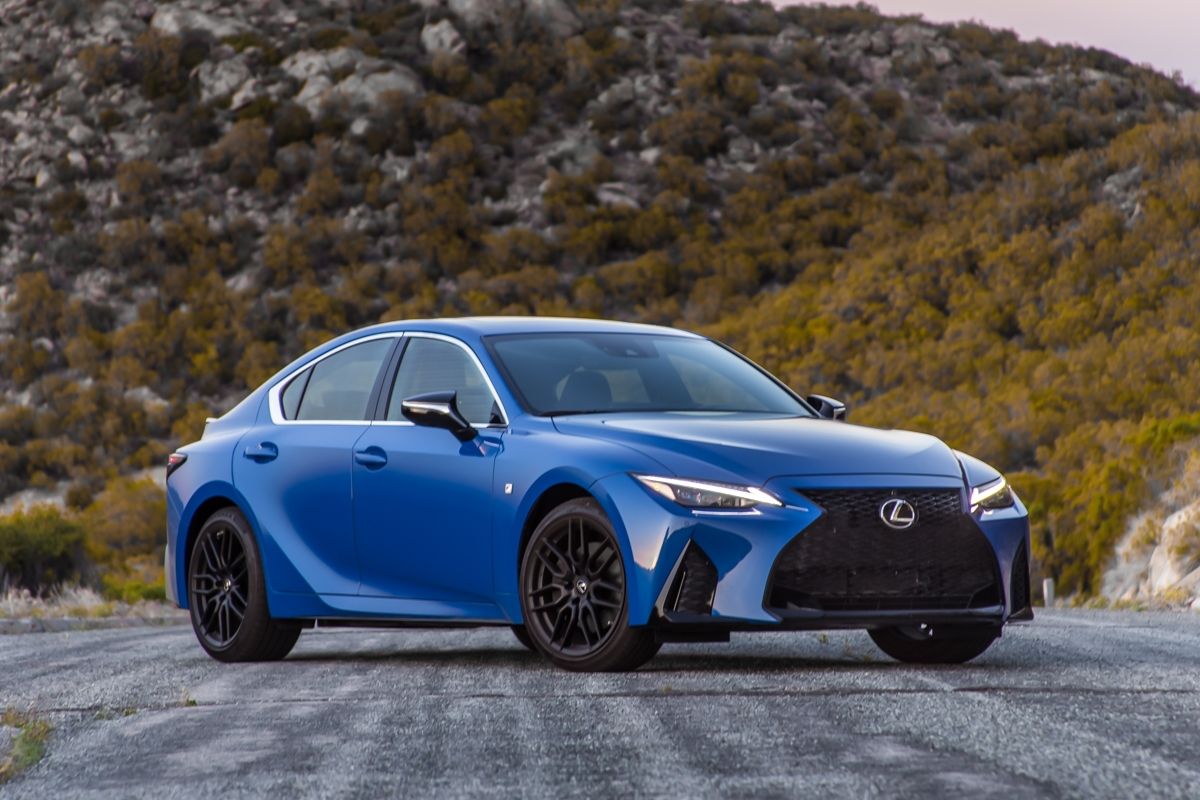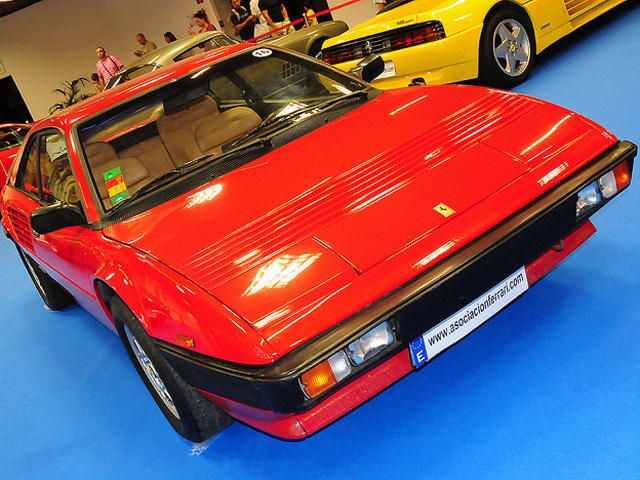
People like to point to the Mondial as evidence that even Ferrari can make a bad car. This was really only true of the first Mondial, the Mondial 8, which lasted for just two years. Ferrari had the car sorted out after that, and things were back on track, but the damage to the name Mondial had already been done, and we tend to remember this car as generally unpleasant. Sometimes it's just difficult to tell where genuine criticisms end and general scorn for cheaper Ferraris begin.
The Mondial was built as a replacement for the Dino 308 GT4. Ferrari had finally decided to allow V8 models to wear Ferrari badges, and the Mondial was a Ferrari-badged mid-engine 2+2 which used the same platform as the car it was replacing. The big difference, apart for badging, was the bodywork. A new Pininfarina design replaced the Bertone design of the Dino car, and the Mondial now also boasted the most headroom of any Ferrari model. It's a good thing too, because there wasn't much else to like about the 1980 Mondial 8.
To explain the problem of the Mondial 8, you have to appreciate how thoroughly unprepared automakers were for the new emissions regulations which came into effect in the US and Japan in 1980. Porsche actually just gave up selling its range-topping 930 in the US from 1980 until 1986, since it just couldn't make it work. Other cars were chased from the market never to return, but most in fact stayed. The problem was, these cars had engines designed before the regulations were in place, and getting the older engines to comply meant dropping horsepower numbers.
The Mondial 8 used the V8 from the Dino 308 GT4 which it was replacing, and so for its badly-timed debut in 1980, it made just 214 horsepower. The 308 GTB of the same year had the same engine, and there was also putting out the same sad numbers, but the 308 had been for sale since 1975, and the emissions-yoked years would prove to be just a two-year blip in the long life of an otherwise excellent car. But the Mondial 8 debuted under these conditions, and even though the car would be making 300 horsepower by the end of the decade, it never fully lived down the shame of those early years.
The engine was a 3.0-liter alloy DOHC V8. In its older forms, it had used a bank of four carburetors, but the new emissions-compliant version found in the Mondial 8 used an unimpressive mechanical fuel injection system. The car also had an electrical system which was not particularly well-behaved and the interior used plastics which were noticeably cheaper than what you expect in a Ferrari. But things would improve in 1982 with the debut of the Mondial Quattrovalvole. This used a four-valve head in place of the two-valve head used for the Mondial 8, and horsepower was up to 240.
The following year saw the introduction of a Cabriolet, and sales finally started to pick up. The Cabriolet was the first proper convertible produced by Ferrari since the 365 GTS/4 had gone out of production a decade earlier, and even those had only had a production run of 122 units. It also has the distinction of being the world's only production 4-seat mid-rear-engine convertible. In 1985, Ferrari's 3.0-liter V8 would grow to 3.2 liters, and the 308 GTB was replaced by the 328 GTB. The Mondial QV was subsequently replaced by the 3.2 Mondial, which boasted 266 horsepower, finally more than the old Dino 308 GT4 had produced.
The interior got a major reworking as well, and new and more advanced ignition system was used. This would last until 1989, when the 328 was also phased out. A whole new model replaced the 328, but the Mondial would remain the same apart from the drivetrain. This last version of the car was the Mondial t, which had the engine from the 348 mounted longitudinally and the gearbox mounted transversely. This formed the "t" which is seen in the car's name, and the design came from Ferrari's F1 cars. Engine displacement was now up to 3.4 liters, corresponding with the replacement of the 328 with the 348 in Ferrari's sports car line.
Power was up to 300 horsepower, but this was frankly too little too late. By the time production ended in 1993, the engine was hopelessly obsolete. Ferrari would abandon the V8 mid-engine 2+2 after this, leaving the 2+2 configuration for the bigger font-engine V12 models (with the exception of the California, V8 but not mid-engine). The Mondial had come quite a long way since the Mondial 8, but the world of high-performance cars had come even further in that time, and Ferrari needed to make some serious changes fast.

